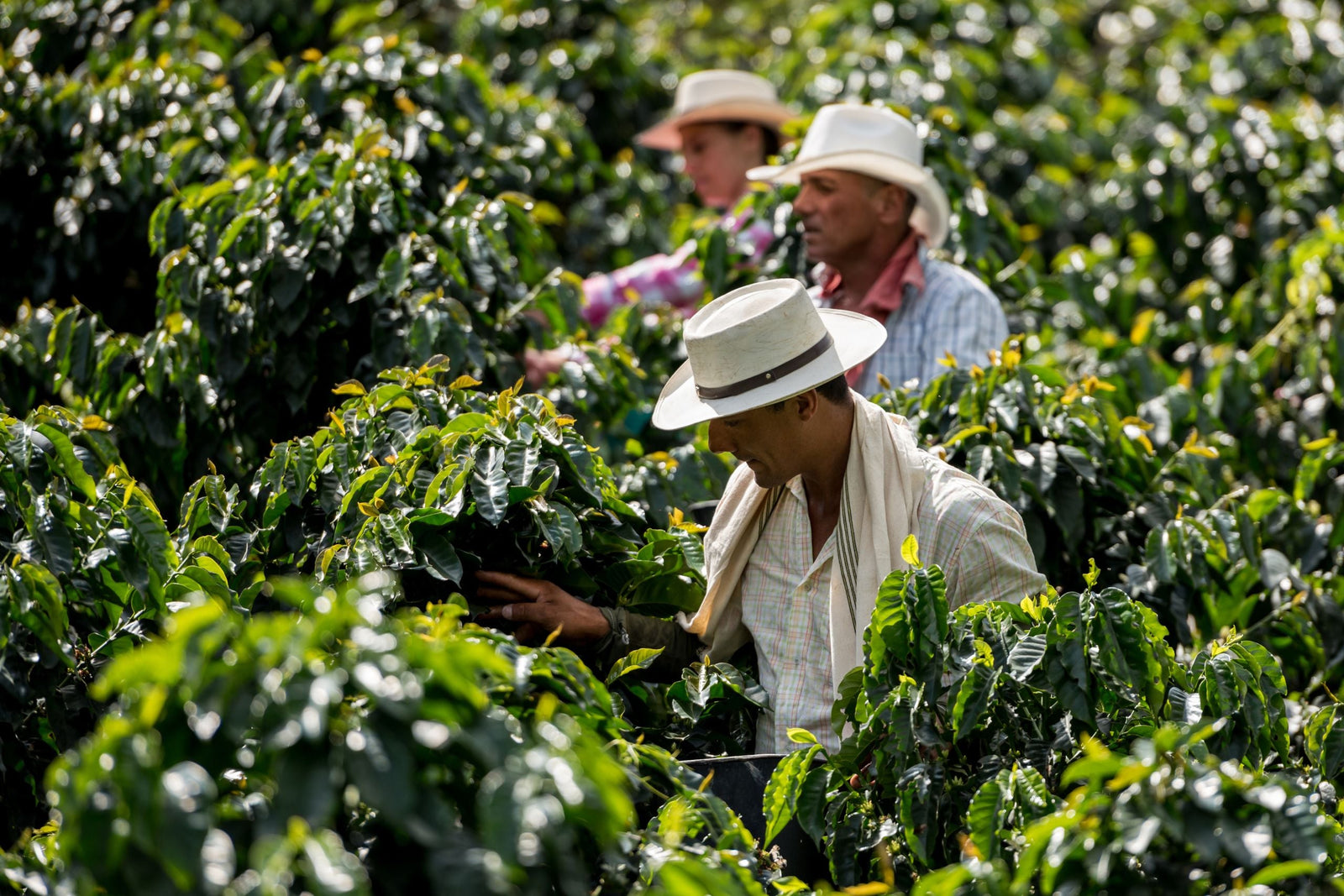
Top Producing Coffee Countries: Explore the Coffee Belt
Top Producing Coffee Countries: Explore the Coffee Belt
- by Pete Leonard
- October 07, 2025
- 4 min read
Most people know where their coffee shop is. Fewer know where their coffee actually comes from. The beans in your cup likely started their journey thousands of miles away, grown in a region known as the Coffee Belt.
This stretch of the globe produces nearly all the world’s coffee, but not all origins taste the same. Different countries grow beans with different flavors, thanks to unique climates, soil, and processing methods. If you have ever wondered why two cups taste worlds apart, the answer usually starts with where they began.
What Is the Coffee Belt?
The Coffee Belt is essentially the Tropics; it is the zone between the Tropic of Cancer and the Tropic of Capricorn. This coffee belt wraps the globe’s middle, from the Andes to East Africa to the islands of Indonesia, and it’s where nearly all of the world’s coffee is grown.
The conditions in this region are ideal for growing coffee plants: reliable and sufficient rainfall, tropical temperatures, high elevations, and nutrient-rich soil. These factors give coffee plants what they need to thrive and develop distinct flavor profiles, especially for Arabica. It’s important to note that most of the world’s finest coffees are Arabica, grown at higher elevations where cooler temps build complexity. But in lower-lying tropical regions, coffee producers grow Robusta, a hardier plant with higher caffeine and a bolder taste.
Within the Coffee Belt, some countries have become known not just for how much coffee they produce, but for the unique taste and quality of what they grow. Let’s take a look at a few of them.
Top Coffee-Producing Countries

Brazil
The world’s largest coffee producer, Brazil, grows coffee across vast plateaus rather than steep mountains. Lower elevations and dry harvest conditions create smooth, nutty, low-acid cups. While much of its coffee supplies blends, specialty lots can be surprisingly sweet and balanced.
Peru
Peru has quietly become a go-to origin for high-quality, specialty-grade coffee. Most of its production happens in the northern highlands (regions like Cajamarca, San Martín, and Amazonas) where the elevation and climate give the beans a clean, crisp character.
Peruvian coffees often have mild acidity, a medium body, and flavor notes that lean toward nut, chocolate, or subtle smokiness. Many farmers here grow organically, and the country has earned a strong reputation for producing ethical, traceable beans that reflect care at every step.
It's a great origin for those who want balance in the cup and sustainability behind the scenes.
Colombia
Colombia is one of the most recognizable names in coffee, and for good reason. Tropical, high-elevation regions like Huila, Nariño, and Antioquia produce beans known for their vibrant acidity, balanced sweetness, and an easy-drinking body.
Most Colombian coffee is washed (or wet-processed), which highlights its crisp, citrusy, and sometimes milk chocolate and cream characteristics. The country’s mountainous terrain and consistent climate allow for multiple harvests each year.
Ethiopia
Ethiopia is considered the birthplace of coffee, and its beans are some of the most complex and flavorful in the world. Growing regions like Yirgacheffe, Sidama, and Harrar are known for producing coffees with floral aromas, fruity notes (such as blueberry or peach), and a light, tea-like body.
You’ll find both washed and natural processing here, each bringing out different sides of the bean’s character.
Guatemala
Guatemala’s volcanic soil and high altitudes create bold, rich coffees with plenty of depth. Key regions include Antigua, Huehuetenango, and Cobán. Each area has its own climate, which contributes to the wide range of flavors found in Guatemalan coffee.
Expect notes of milk chocolate, spice, almond, and a full body. Washed and natural processing is most common.
Costa Rica
Costa Rica has long been a standout in Central American coffee, thanks to its focus on quality over quantity. Regions like Tarrazú, Central Valley, and West Valley are known for producing bright, complex coffees with excellent clarity.
You’ll often taste citrus, honey, or stone fruit notes, especially in beans processed using the country’s signature honey method, which sits between natural and washed processing. Costa Rica’s farms are small but highly specialized, and the country’s coffee regulations ensure that only the best makes it to export.
If you're after something vibrant, clean, and thoughtfully produced, Costa Rican coffee is a solid pick.
Why Origin Matters to Us
Where coffee is grown shapes everything from how it tastes to the story it tells. At I Have a Bean, we source broadly across the Coffee Belt but select specific locales within those origins that reflect quality through care and craftsmanship. We do not choose beans because they are trendy; we choose them when their quality and purpose align with ours.
We work only with growers and importers who value people as much as quality, using sustainable farming and fair relationships that keep every hand in the chain thriving. Each coffee we select reveals the character of its place, the fruit of its soil, its altitude, and its culture.
Through our Nuance Roasting Process, we bring out the clarity and sweetness that make the top one percent coffees shine. Every bag we roast carries a signature, a roast date, and a promise: you will taste the difference, and you will know the story behind it.
Curious where your next favorite might come from? Explore our current single-origin offerings or reach out. We love helping people discover the world in a cup.
